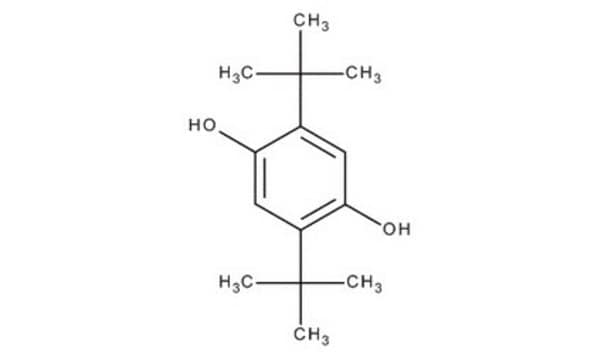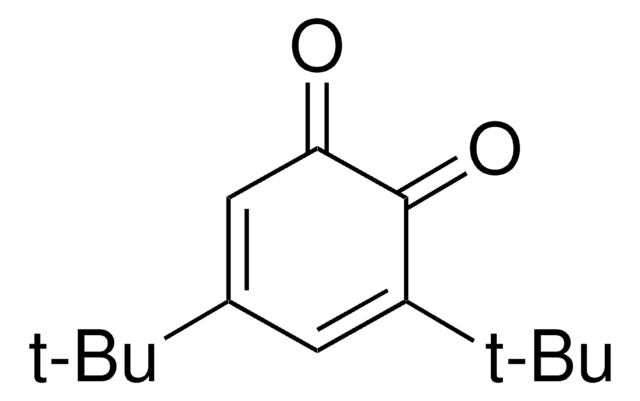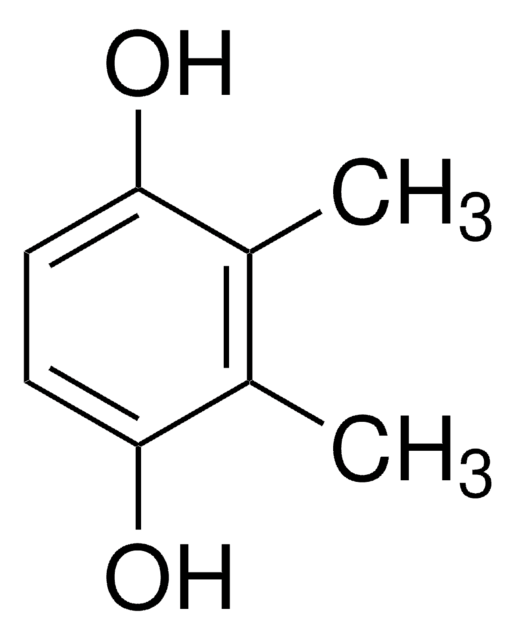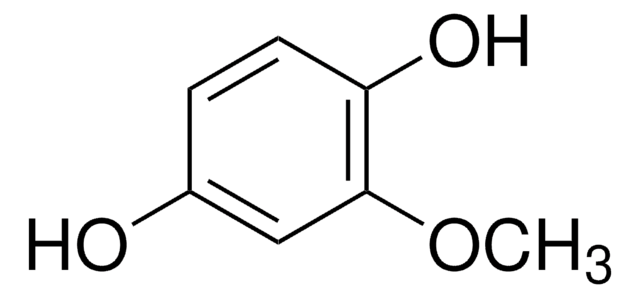Wichtige Dokumente
112976
2,5-Di-tert-butylhydrochinon
99%
Synonym(e):
1,4-Dihydroxy-2,5-di-tert-butylbenzene, 2,5-Bis(1,1-dimethylethyl)-1,4-benzenediol, 2,5-Di-tert-butyl-1,4-benzenediol, 2,5-Di-tert-butyl-1,4-benzohydroquinone, 2,5-Di-tert-butyl-1,4-dihydroxybenzene, 2,5-Di-tert-butylquinol, 2,5-Dihydroxy-1,4-di-tert-butylbenzene, 2,5-Ditert-butylbenzene-1,4-diol, 3,6-Di-tert-butylhydroquinone
Größe auswählen
Größe auswählen
About This Item
Empfohlene Produkte
Qualitätsniveau
Assay
99%
Form
solid
Selbstzündungstemp.
790 °F
mp (Schmelzpunkt)
216-218 °C (lit.)
SMILES String
CC(C)(C)c1cc(O)c(cc1O)C(C)(C)C
InChI
1S/C14H22O2/c1-13(2,3)9-7-12(16)10(8-11(9)15)14(4,5)6/h7-8,15-16H,1-6H3
InChIKey
JZODKRWQWUWGCD-UHFFFAOYSA-N
Suchen Sie nach ähnlichen Produkten? Aufrufen Leitfaden zum Produktvergleich
Verwandte Kategorien
Anwendung
Biochem./physiol. Wirkung
Signalwort
Danger
H-Sätze
Gefahreneinstufungen
Acute Tox. 3 Oral - Aquatic Acute 1 - Aquatic Chronic 1 - Skin Sens. 1 - STOT SE 3
Zielorgane
Respiratory system
Lagerklassenschlüssel
6.1D - Non-combustible acute toxic Cat.3 / toxic hazardous materials or hazardous materials causing chronic effects
WGK
WGK 3
Flammpunkt (°F)
Not applicable
Flammpunkt (°C)
Not applicable
Persönliche Schutzausrüstung
dust mask type N95 (US), Eyeshields, Gloves
Hier finden Sie alle aktuellen Versionen:
Besitzen Sie dieses Produkt bereits?
In der Dokumentenbibliothek finden Sie die Dokumentation zu den Produkten, die Sie kürzlich erworben haben.
Kunden haben sich ebenfalls angesehen
Active Filters
Unser Team von Wissenschaftlern verfügt über Erfahrung in allen Forschungsbereichen einschließlich Life Science, Materialwissenschaften, chemischer Synthese, Chromatographie, Analytik und vielen mehr..
Setzen Sie sich mit dem technischen Dienst in Verbindung.













